techfacts
Monday 7 April 2014
Friday 23 August 2013
5 Pen PC Technology
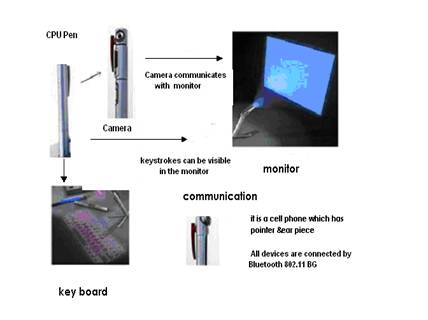
LED Projector
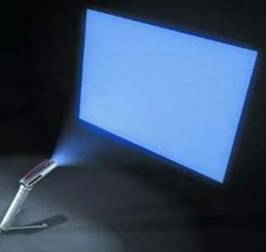
P-ISM ("Pen-style Personal Networking Gadget Package"), which is nothing but the new discovery, which is under developing, stage by NEC Corporation. 5 Pen PC Technology is a gadget package including five functions: a pen-style cellular phone with a handwriting data input function, virtual keyboard, a very small projector, camera scanner, and personal ID key with cashless pass function. 5 Pen PC Technology are connected with one another through short-range wireless technology. The whole set is also connected to the Internet through the cellular phone function. This personal gadget in a minimalist pen style enables the ultimate ubiquitous computing.
In fact, no-one expects much activity on 802.11n installations until the middle of 2008. "Rolling out 802.11n would mean a big upgrade for customers who already have full Wi-Fi coverage, and would be a complex add-on to existing wired networks, for those who haven't. Bluetooth is widely used because we can able to transfer data or make connections without wires. 5 Pen PC Technology is very effective because we can able to connect whenever we need without having wires. 5 Pen PC Technologyare used at the frequency band of 2.4 GHz ISM (although they use different access mechanisms). Blue tooth mechanism is used for exchanging signal status information between two devices. 5 Pen PC Technology techniques have been developed that do not require communication between the two devices (such as Blue tooth's Adaptive Frequency Hopping), the most efficient and comprehensive solution for the most serious problems can be accomplished by silicon vendors. They can implement information exchange capabilities within the designs of the Blue tooth. The circuit diagram for the 802.11B/G is given below. It is nothing but also type of Blue tooth. Using this connectivity we can also connect it with the internet and can access it anywhere in the world.
Virtual Keyboard:
The Virtual Laser Keyboard (VKB) is the ULTIMATE new gadget for PC users. The VKB emits laser on to the desk where it looks like the keyboard having QWERTY arrangement of keys i.e., it uses a laser beam to generate a full-size perfectly operating laser keyboard that smoothly connects to of PC and Most of the handheld devices (PDA's, tablet PC's). The I-Tech laser keyboard acts exactly like any other "ordinary" keyboard:
Features of virtual keyboards are:
1.VKB settings can be changed by Sound:
2.Controllable Virtual Keyboard sound effects (key clicks)
3.Connection: Connection to the appropriate Laptop/PC port
4.Intensity: Intensity of the projected Virtual Keyboard
5.Timeouts: coordinated timeouts to conserve the Virtual Keyboard's battery life
Features of virtual keyboards are:
1.VKB settings can be changed by Sound:
2.Controllable Virtual Keyboard sound effects (key clicks)
3.Connection: Connection to the appropriate Laptop/PC port
4.Intensity: Intensity of the projected Virtual Keyboard
5.Timeouts: coordinated timeouts to conserve the Virtual Keyboard's battery life
6.Sensitivity: adjustable sensitivity of the Virtual Keyboard
7.Auto-repeat: Allows the VKB to automatically repeat a key based on prescribed parameters.
7.Auto-repeat: Allows the VKB to automatically repeat a key based on prescribed parameters.
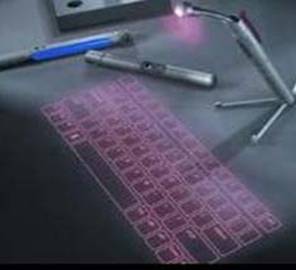
Google App Engine
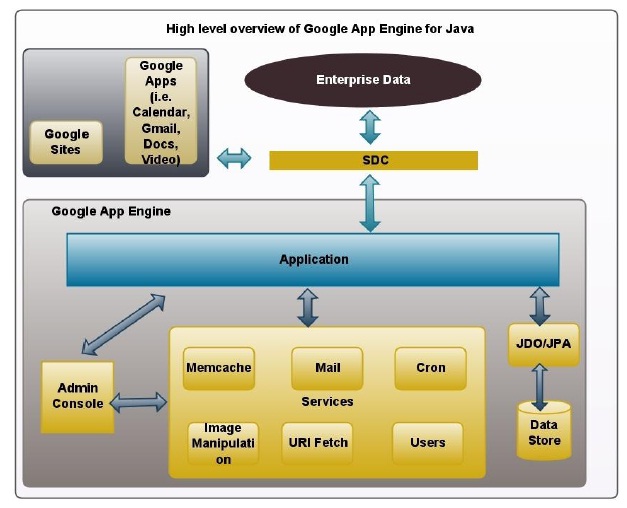 Google App Engine lets you run your web applications on Google's infrastructure. App Engine applications are easy to build, easy to maintain, and easy to scale as your traffic and data storage needs grow. With App Engine, there are no servers to maintain: You just upload your application, and it's ready to serve your users.
Google App Engine lets you run your web applications on Google's infrastructure. App Engine applications are easy to build, easy to maintain, and easy to scale as your traffic and data storage needs grow. With App Engine, there are no servers to maintain: You just upload your application, and it's ready to serve your users.
You can serve your app from your own domain name (such as http://www.example.com/) using Google Apps. Or, you can serve your app using a free name on the appspot.com domain. You can share your application with the world, or limit access to members of your organization.
Google App Engine supports apps written in several programming languages. With App Engine's Java runtime environment, you can build your app using standard Java technologies, including the JVM, Java servlets, and the Java programming language—or any other language using a JVM-based interpreter or compiler, such as JavaScript or Ruby. App Engine also features a dedicated Python runtime environment, which includes a fast Python interpreter and the Python standard library. The Java and Python runtime environments are built to ensure that your application runs quickly, securely, and without interference from other apps on the system.
With App Engine, you only pay for what you use. There are no set-up costs and no recurring fees. The resources your application uses, such as storage and bandwidth, are measured by the gigabyte, and billed at competitive rates. You control the maximum amounts of resources your app can consume, so it always stays within your budget. App Engine costs nothing to get started. All applications can use up to 500 MB of storage and enough CPU and bandwidth to support an efficient app serving around 5 million page views a month, absolutely free. When you enable billing for your application, your free limits are raised, and you only pay for resources you use above the free levels.
BlackBerry Technology

 Introduction of BlackBerry Technology
Introduction of BlackBerry Technology
BlackBerry handhelds are integrated into an organization's e-mail system through a software package called " BlackBerry Enterprise Server " (BES). Versions of BES are available for Microsoft Exchange, Lotus Domino and Novell GroupWise. While individual users may be able to use a wireless provider's e-mail services without having to install BES themselves, organizations with multiple users usually run BES on their own network. Some third-party companies provide hosted BES solutions. Every BlackBerry has a unique id called BlackBerry PIN which is used to identify the device to the BES. BES can act as a sort of e-mail relay for corporate accounts so that users always have access to their e-mail. The software monitors the user's local "inbox", and when a new message comes in, it picks up the message and passes it to RIM's Network Operations Center (NOC).
The messages are then relayed to the user's wireless provider, which in turn delivers them to the user's BlackBerry device. This is called "push e-mail," because all new e-mails, contacts and calendar entries are "pushed" out to the BlackBerry device automatically, as opposed to the user synchronizing the data by hand. Device storage also enables the mobile user to access all data offline in areas without wireless service. As soon as the user connects again, the BES sends the latest data. An included feature in the newer models of the BlackBerry is the ability for it to track your current location through Trilateration.
One can view the online maps on the phone and see current location denoted by a flashing dot. However, accuracy of BlackBerry trilateration is less than that of GPS due to a number of factors, including cell tower blockage by large buildings, mountains, or distance. BES also provides handhelds with TCP/IP connectivity accessed through a component called "Mobile Data Service" (MDS). This allows for custom application development using data streams on BlackBerry devices based on the Sun Microsystems Java ME platform. In addition, BES provides security, in the form of Triple DES or, more recently, AES encryption of all data (both e-mail and MDS traffic) that travels between the BlackBerry handheld and a BlackBerry Enterprise Server .
Most providers offer flat monthly pricing for unlimited data between BlackBerry units and BES. In addition to receiving e-mail, organizations can make intranets or custom internal applications with unmetered traffic.
The messages are then relayed to the user's wireless provider, which in turn delivers them to the user's BlackBerry device. This is called "push e-mail," because all new e-mails, contacts and calendar entries are "pushed" out to the BlackBerry device automatically, as opposed to the user synchronizing the data by hand. Device storage also enables the mobile user to access all data offline in areas without wireless service. As soon as the user connects again, the BES sends the latest data. An included feature in the newer models of the BlackBerry is the ability for it to track your current location through Trilateration.
One can view the online maps on the phone and see current location denoted by a flashing dot. However, accuracy of BlackBerry trilateration is less than that of GPS due to a number of factors, including cell tower blockage by large buildings, mountains, or distance. BES also provides handhelds with TCP/IP connectivity accessed through a component called "Mobile Data Service" (MDS). This allows for custom application development using data streams on BlackBerry devices based on the Sun Microsystems Java ME platform. In addition, BES provides security, in the form of Triple DES or, more recently, AES encryption of all data (both e-mail and MDS traffic) that travels between the BlackBerry handheld and a BlackBerry Enterprise Server .
Most providers offer flat monthly pricing for unlimited data between BlackBerry units and BES. In addition to receiving e-mail, organizations can make intranets or custom internal applications with unmetered traffic.
How it works:
As we all know, there is always software behind the hardware. This holds true for the blackberry as well. Blackberry Server Software comes in two forms1. BlackBerry Professional Software (BPS)
2. BlackBerry Enterprise Server (BES)
Capacitive And Resistive Touch Systems
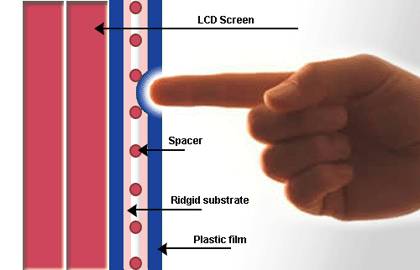
Capacitive:
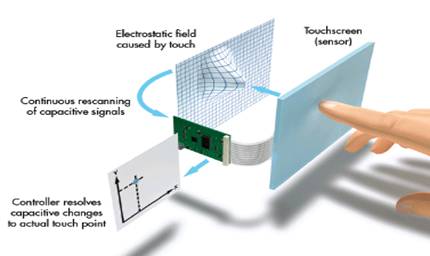
Existing work on Touch Systems:
Touch screens have subsequently become familiar in everyday life. Companies use touch screens for kiosk systems in retail and tourist settings, point of sale systems, ATMs, and PDAs, where a stylus is sometimes used to manipulate the GUI and to enter data.
The popularity of smart phone’s , tablet computers, portable video game consoles and many types of information appliances is driving the demand and acceptance of common touch screens, for portable and functional electronics. With a display of a simple smooth surface, and direct interaction without any hardware (keyboard or mouse) between the user and content, fewer accessories are required.
Resistive touch is used in restaurants, factories and hospitals due to its high resistance to liquids and contaminants. A major benefit of resistive touch technology is its low cost. Disadvantages include the need to press down, and a risk of damage by sharp objects. Resistive touch screens also suffer from poorer contrast, due to having additional reflections from the extra layer of material placed over the screen.
A Capacitive stylus is a special type of stylus that works on capacitive touch screens primarily designed for fingers, as on iPhone and most Android devices. They are different from standard styli designed for resistive touch screens.
According to a report by ABI Research, styli are especially needed in China for handwriting recognition because of the nature of its writing system.
Resistive touch screen technology works well with almost any stylus-like object, and can also be operated with gloved fingers and bare fingers alike. In some circumstances, this is more desirable than a capacitive touch screen, which has to be operated with a capacitive pointer, such as a bare finger (gloves will not work on capacitive touch screens). The costs are relatively low when compared with active touchscreen technologies. Resistive touchscreen technology can be made to support multi-touch input. gesture is fed through a computer. One way gesture recognition is being used is to help the physically impaired to interact with computers, such as interpreting sign language.According to a report by ABI Research, styli are especially needed in China for handwriting recognition because of the nature of its writing system.
Gesture Recognition Technology
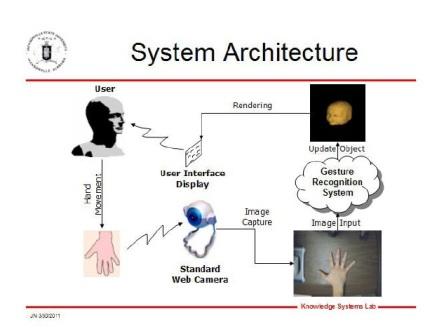
nterface with computers using gestures of the human body, typically hand movements. In gesture recognition technology, a camera reads the movements of the human body and communicates the data to a computer that uses the gestures as input to control devices or applications. For example, a person clapping his hands together in front of a camera can produce the sound of cymbals being crashed together when the gesture is fed through a computer. One way gesture recognition is being used is to help the physically impaired to interact with computers, such as interpreting sign language.
The technology also has the potential to change the way users interact with computers by eliminating input devices such as joysticks, mice andkeyboards and allowing the unencumbered body to give signals to the computer through gestures such as finger pointing. Unlike haptic interfaces, gesture recognition does not require the user to wear any special equipment or attach any devices to the body. The gestures of the body are read by a camera instead of sensors attached to a device such as adata glove.
In addition to hand and body movement, gesture recognition technology also can be used to read facial and speech expressions (i.e., lip reading), and eye movements. The literature includes ongoing work in the computer vision field on capturing gestures or more general human pose and movements by cameras connected to a computer.nterface with computers using gestures of the human body, typically hand movements. In gesture recognition technology, a camera reads the movements of the human body and communicates the data to a computer that uses the gestures as input to control devices or applications. For example, a person clapping his hands together in front of a camera can produce the sound of cymbals being crashed together when the gesture is fed through a computer. One way gesture recognition is being used is to help the physically impaired to interact with computers, such as interpreting sign language.
The technology also has the potential to change the way users interact with computers by eliminating input devices such as joysticks, mice andkeyboards and allowing the unencumbered body to give signals to the computer through gestures such as finger pointing. Unlike haptic interfaces, gesture recognition does not require the user to wear any special equipment or attach any devices to the body. The gestures of the body are read by a camera instead of sensors attached to a device such as adata glove.
In addition to hand and body movement, gesture recognition technology also can be used to read facial and speech expressions (i.e., lip reading), and eye movements. The literature includes ongoing work in the computer vision field on capturing gestures or more general human pose and movements by cameras connected to a computer.
Li-Fi Technology
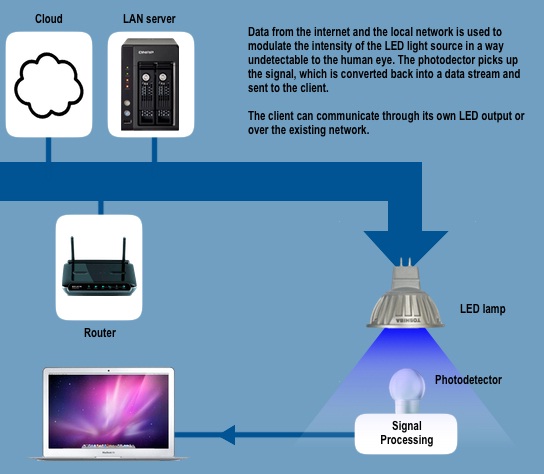
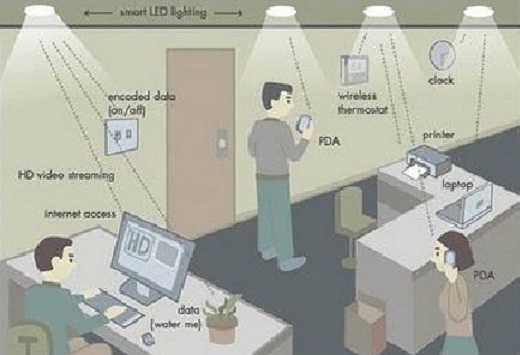
In simple terms, Li-Fi can be thought of as a light-based Wi-Fi. That is, it uses light instead of radio waves to transmit information. And instead of Wi-Fi modems, Li-Fi would use transceiver-fitted LED lamps that can light a room as well as transmit and receive information. Since simple light bulbs are used, there can technically be any number of access points.
This technology uses a part of the electromagnetic spectrum that is still not greatly utilized- The Visible Spectrum. Light is in fact very much part of our lives for millions and millions of years and does not have any major ill effect. Moreover there is 10,000 times more space available in this spectrum and just counting on the bulbs in use, it also multiplies to 10,000 times more availability as an infrastructure, globally.
It is possible to encode data in the light by varying the rate at which the LEDs flicker on and off to give different strings of 1s and 0s. The LED intensity is modulated so rapidly that human eyes cannot notice, so the output appears constant.
More sophisticated techniques could dramatically increase VLC data rates. Teams at the University of Oxford and the University of Edinburgh are focusing on parallel data transmission using arrays of LEDs, where each LED transmits a different data stream. Other groups are using mixtures of red, green and blue LEDs to alter the light's frequency, with each frequency encoding a different data channel.
Li-Fi, as it has been dubbed, has already achieved blisteringly high speeds in the lab. Researchers at the Heinrich Hertz Institute in Berlin, Germany, have reached data rates of over 500 megabytes per second using a standard white-light LED. Haas has set up a spin-off firm to sell a consumer VLC transmitter that is due for launch next year. It is capable of transmitting data at 100 MB/s - faster than most UK broadband connections
Sunday 11 August 2013
Flying Commuters

Passenger jets and drones are not the only vehicles that will need to talk to each other in the none-too-far-off future. Though flight-minded laymen still have not seen a Jetsons-like age arrive, the personal air commute is, at least, closer than it was before. Jet pack ideas abound, (such as the Martin Jetpack and Marc Newson’s “Body Jet”) and flying cars are on the make (for example, Terrafugia and Moller International’s Skycar). Sure, the morning commute is not likely to crowd the sky the way it does our streets anytime soon. However, if the air is thick with nine-to-fivers, there will have to be some traffic system in place. Current air-traffic control is not designed to handle localized takeoffs and landings. But, just as vehicle-to-vehicle communication is soon to keep automatic cars from colliding, aircraft-to-aircraft interaction is soon to make the man in manned aircraft a little less necessary. Congress has ordered the FAA to pave the way—legally and technically—for unmanned aircraft systems to fly in U.S. airspace by 2015. Flying commuters can piggyback on those changes.
Cybersecurity
Recent technological advances in computing, communications, software, and hardware have enabled the significant growth of cyberspace, an important aspect of modern life that continues to transform the way citizens, business, and governments interact, collaborate, and conduct business. Our heavy dependence on various digital infrastructures has made them strategic national assets that must be protected to ensure economic growth, prosperity, and safety in the future.
Cybersecurity is an emerging area of intense activity that endeavors to provide innovative solutions to ensure uninterrupted communications and service availability. A special April 2013 issue of Computer, the IEEE Computer Society's flagship magazine, aims to disseminate the latest advances in cybersecurity that are critical in thwarting future threats, attacks, fraud, and damage. The articles will focus on effective techniques and approaches that have the potential to ensure a safe, trustworthy, secure, and resilient cyberspace.
Monday 29 July 2013
Self-healing materials
One of the defining characteristics
of living organisms is their inherent ability to repair physical damage. A
growing trend in biomimicry is the creation of non-living structural materials
that also have the capacity to heal themselves when cut, torn or cracked.
Self-healing materials which can repair damage without external human
intervention could give manufactured goods longer lifetimes and reduce the demand
for raw materials, as well as improving the inherent safety of materials used
in construction or to form the bodies of aircraft.
Organic electronics and photovoltaics
Organic electronics – a type of
printed electronics – is the use of organic materials such as polymers to
create electronic circuits and devices. In contrast to traditional
(silicon-based) semiconductors that are fabricated with expensive
photolithographic techniques, organic electronics can be printed using
low-cost, scalable processes such as ink jet printing, making them extremely
cheap compared with traditional electronics devices, both in terms of the cost per
device and the capital equipment required to produce them. While organic
electronics are currently unlikely to compete with silicon in terms of speed
and density, they have the potential to provide a significant edge in cost and
versatility. The cost implications of printed mass-produced solar photovoltaic
collectors, for example, could accelerate the transition to renewable energy.
Fourth-generation reactors and nuclear-waste recycling
Current once-through nuclear power
reactors use only 1% of the potential energy available in uranium, leaving the
rest radioactively contaminated as nuclear “waste”. While the technical
challenge of geological disposal is manageable, the political challenge of
nuclear waste seriously limits the appeal of this zero-carbon and highly
scalable energy technology. Spent-fuel recycling and breeding uranium-238 into
new fissile material – known as Nuclear 2.0 – would extend already-mined
uranium resources for centuries while dramatically reducing the volume and
long-term toxicity of wastes, whose radioactivity will drop below the level of
the original uranium ore on a timescale of centuries rather millennia. This
makes geological disposal much less of a challenge (and arguably even
unnecessary) and nuclear waste a minor environmental issue compared to
hazardous wastes produced by other industries. Fourth-generation technologies,
including liquid metal-cooled fast reactors, are now being deployed
in several countries and
are offered by established nuclear engineering companies.
Author:
Sir David King is Professor and Director of Cambridge Kaspakas and Chair of the World Economic Forum Global Agenda Council on Emerging
Technologies
Remote sensing
The increasingly widespread use of
sensors that allow often passive responses to external stimulae will continue
to change the way we respond to the environment, particularly in the area of
health. Examples include sensors that continually monitor bodily function –
such as heart rate, blood oxygen and blood sugar levels – and, if necessary,
trigger a medical response such as insulin provision. Advances rely on wireless
communication between devices, low power-sensing technologies and, sometimes,
active energy harvesting. Other examples include vehicle-to-vehicle sensing for
improved safety on the road.
Carbon dioxide (eCO2) conversion and us
OnLine Electric Vehicles (OLEV)
Wireless technology can now deliver
electric power to moving vehicles. In next-generation electric cars, pick-up coil
sets under the vehicle floor receive power remotely via an electromagnetic
field broadcast from cables installed under the road. The current also charges
an onboard battery used to power the vehicle when it is out of range. As
electricity is supplied externally, these vehicles need only a fifth of the
battery capacity of a standard electric car, and can achieve transmission
efficiencies of over 80%. Online electric vehicles are currently undergoing
road tests in Seoul, South Korea.
3-D printing and remote manufacturing
Three-dimensional printing allows
the creation of solid structures from a digital computer file, potentially
revolutionizing the economics of manufacturing if objects can be printed
remotely in the home or office. The process involves layers of material being
deposited on top of each other in to create free-standing structures from the
bottom up. Blueprints from computer-aided design are sliced into cross-section
for print templates, allowing virtually created objects to be used as models
for “hard copies” made from plastics, metal alloys or other materials.
Saturday 27 July 2013
Google Driverless Car
I could still remember the day I watch the iRobot as a teen, and being skeptical about my brother’s statement that one day, the driverless car will become reality. And it’s now a reality, made possible by… a search engine company, Google
While the data source is still a secret recipe, the Google driverless car is powered by artificial intelligence that utilizes the input from the video cameras inside the car, a sensor on the vehicle’s top, and some radar and position sensors attached to different positions of the car. Sounds like a lot of effort to mimic the human intelligence in a car, but so far the system has successfully driven 1609 kilometres without human commands!“You can count on one hand the number of years it will take before ordinary people can experience this.” Google co-founder, Sergey Brin said. However, innovation is an achievement, consumerization is the headache, as Google currently face the challenge to forge the system into an affordable gem that every worker with an average salary could benefit from.

Parallella
 (Image Source: YouTube)
(Image Source: YouTube)Parallella is going to change the way that computers are made, and Adapteva offers you chance to join in on this revolution. Simply put, it’s a supercomputer for everyone. Basically, an energy-efficient computer built for processing complex software simultaneously and effectively. Real-time object tracking, holographic heads-up display, speech recognition will become even stronger and smarter with Parallella.The project has been successfully funded so far, with an estimated delivery date of February 2013. For a mini supercomputer, the price seems really promising since it’s magically $99! It’s not recommended for the non-programmer and non-Linux user, but the kit is loaded with development software to create your personal projects.
I never thought the future of computing could be kick-started with just $99, which is made possible using crowdfunding platforms.
Project Fiona
Meet the first generation of the gaming tablet. Razer’s Project Fiona is a serious gaming tablet built for hardcore gaming. Once it’s out, it will be the frontier for the future tablets, as tech companies might want to build their own tablets, dedicated towards gaming, but for now Fiona is the only possible one that will debut in 2013.This beast features next generation Intel® Core i7 processor geared to render all your favorite PC games, all at the palm of your hands. Crowned as the best gaming accessories manufacturer, Razer clearly knows how to build user experience straight into the tablet, and that means 3-axis gyro, magnetometer, accelerometer and full-screen user interface supporting multi-touch. My body and soul are ready.
Firefox OS
iOS and Android are great, but they each have their own rules and policies that certainly inhibit the creative efforts of developers. Mozilla has since decided to build a new mobile operating system from scratch, one that will focus on true openness, freedom and user choice. It’s Firefox OS.
Firefox OS is built on Gonk, Gecko and Gaia software layers – for the rest of us, it means it is built on open source, and it carries web technologies such as HTML5 and CSS3.Developers can create and debut web apps without the blockade of requirements set by app stores, and users could even customize the OS based on their needs. Currently the OS has made its debut on Android-compatible phones, and the impression so far, is great.
You can use the OS to do essential tasks you do on iOS or Android: calling friends, browsing web, taking photos, playing games, they are all possible on Firefox OS, set to rock the smartphone market..
SmartThings
The current problem that most devices have is that they function as a standalone being, and it require effort for tech competitors to actually partner with each other and build products that can truly connect with each other. SmartThings is here to make your every device, digital or non-digital, connect together and benefit you.With SmartThings you can get your smoke alarms, humidity, pressure and vibration sensors to detect changes in your house and alert you through your smartphone! Imagine the possibilities with this.
You could track who’s been inside your house, turn on the lights while you’re entering a room, shut windows and doors when you leave the house, all with the help of something that only costs $500! Feel like a tech lord in your castle with this marvel.
Eye Tribe
Eye tracking has been actively discussed by technology enthusiasts throughout these years, but it’s really challenging to implement. But Eye Tribe actually did this. They successfully created the technology to allow you to control your tablet, play flight simulator, and even slice fruits in Fruit Ninja only with your eye movements. basically taking the common eye-tracking technology and combining it with a front-facing camera plus some serious computer-vision algorithm, and voila, fruit slicing done with the eyes! A live demo was done in LeWeb this year and we may actually be able to see it in in action in mobile devices in 2013.
Currently the company is still seeking partnership to bring this sci-fi tech into the consumer market but you and I know that this product is simply too awesome to fail.
Leap Motion
Multi-touch desktop is a (miserably) failed product due to the fact that hands could get very tired with prolonged use, but Leap Motion wants to challenge this dark area again with a more advanced idea. It lets you control the desktop with fingers, but without touching the screen. not your typical motion sensor, as Leap Motion allows you to scroll the web page, zoom in the map and photos, sign documentss and even play a first person shooter game with only hand and finger movements. The smooth reaction is the most crucial key point here. More importantly, you can own this future with just $70, a price of a premium PS3 game title!
If this device could completely work with Oculus Rift to simulate a real-time gaming experience, gaming is going to get a major make-over.
. Oculus Rift
Virtual Reality gaming is here in the form of Oculus Rift. This history-defining 3D headset lets you mentally feel that you are actually inside a video game. In the Rift’s virtual world, you could turn your head around with ultra-low latency to view the world in high resolution display.
There are premium products in the market that can do the same, but Rift wants you to enjoy the experience at only $300, and the package even comes as a development kit. This is the beginning of the revolution for next-generation gaming.
The timing is perfect as the world is currently bombarded with the virtual reality topic that could also be attributed to Sword Art Online, the anime series featuring the characters playing games in an entirely virtual world. While we’re getting there, it could take a few more years to reach that level of realism. Oculus Rift is our first step.
FORM 1
Form 1
Just as the term suggests, 3D printing is the technology that could forge your digital design into a solid real-life product. It’s nothing new for the advanced mechanical industry, but a personal 3D printer is definitely a revolutionary idea.
Everybody can create their own physical product based on their custom design, and no approval needed from any giant manufacturer! Even the James Bond’s Aston Martin which was crashed in the movie was a 3D printed product!
Form 1 is one such personal 3D printer which can be yours at just $2799. It may sound like a high price but to have the luxury of getting producing your own prototypes, that’s a reaonable price.
Imagine a future where every individual professional has the capability to mass produce their own creative physical products without limitation. This is the future where personal productivity and creativity are maximized.
GOOGLE GLASS
Augmented Reality has already gotten into our life in the forms of simulated experiment and education app, but Google is taking it several steps higher with Google Glass. Theoretically, with Google Glass, you are able to view social media feeds, text, Google Maps, as well as navigate with GPS and take photos. You will also get the latest updates while you are on the ground.

It’s truly what we called vision, and it’s absolutely possible given the fact that the Google’s co-founder, Sergey Brin has demo’ed the glass with skydivers and creatives. Currently the device is only available to some developers with the price tag of $1500, but expect other tech companies trying it out and building an affordable consumer version
Tuesday 14 May 2013
32-Core CPUs From Intel and AMD
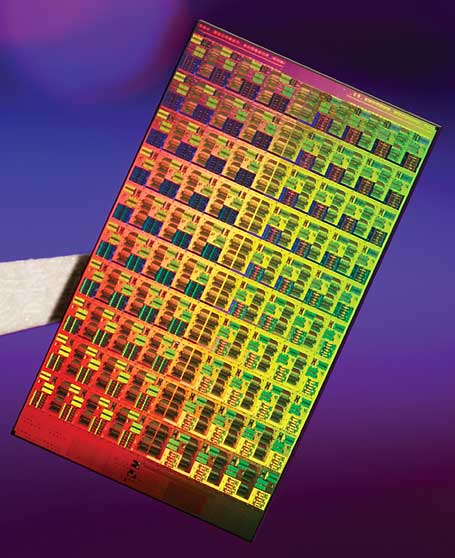
What is it? With the gigahertz race largely abandoned, bothAMD and Intel are trying to pack more cores onto a die in order to continue to improve processing power and aid with multitasking operations. Miniaturizing chips further will be key to fitting these cores and other components into a limited space. Intel will roll out 32-nanometer processors (down from today's 45nm chips) in 2009.
When is it coming? Intel has been very good about sticking to its road map. A six-core CPU based on the Itanium design should be out imminently, when Intel then shifts focus to a brand-new architecture called Nehalem, to be marketed as Core i7. Core i7 will feature up to eight cores, with eight-core systems available in 2009 or 2010. (And an eight-core AMD project called Montreal is reportedly on tap for 2009.)
After that, the timeline gets fuzzy. Intel reportedly canceled a 32-core project called Keifer, slated for 2010, possibly because of its complexity (the company won't confirm this, though). That many cores requires a new way of dealing with memory; apparently you can't have 32 brains pulling out of one central pool of RAM. But we still expect cores to proliferate when the kinks are ironed out: 16 cores by 2011 or 2012 is plausible (when transistors are predicted to drop again in size to 22nm), with 32 cores by 2013 or 2014 easily within reach. Intel says "hundreds" of cores may come even farther down the line.
Subscribe to:
Posts (Atom)






